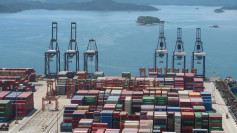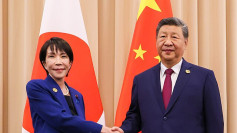China's new J-35A stealth fighter took center stage at the Zhuhai International Aviation & Aerospace Exhibition, offering a rare glimpse of the latest addition to the People's Liberation Army Air Force's (PLAAF) arsenal. The debut comes more than a decade after the initial flight of its predecessor, the J-31. However, despite the aircraft's high-profile public appearance, military analysts remain in the dark about the true capabilities of the J-35A, a point underscored by Collin Koh of the S. Rajaratnam School of International Studies in Singapore. "Because of the black box typically surrounding PLA miltech developments, we won't be too certain of the J-35's performance," Koh said.
The J-35A, developed by the Shenyang Aircraft Corporation, a unit of state-owned Aviation Industry Corporation of China, is one of two J-35 variants. While the J-35A is land-based, another version is designed for use with China's aircraft carriers. According to the state-run People's Daily, the J-35A is primarily intended to "seize and maintain air supremacy." Yet, analysts have pointed out the numerous unknowns about the aircraft's stealthiness and combat effectiveness, raising questions about its ability to rival U.S. fifth-generation fighters, such as the F-35.
The comparison to Lockheed Martin's F-35 is inevitable given the J-35's similar airframe shape, aimed at minimizing its radar cross-section. Still, experts, including Peter Layton of the Griffith Asia Institute, are cautious about drawing conclusions without detailed information on radar-absorbing coatings or advanced sensor systems. "Never too sure about much except the shape of the airframe from these air shows," Layton remarked. "The engines used are always a question."
Engine technology remains a critical area for the J-35A's potential success. China has historically relied on Russian engines for its fighters, but the J-31 utilized Chinese-made WS-13 engines, and the J-35A could reportedly be upgraded with the more powerful WS-19 engines. Improved engines are key for increased range, speed, and payload capabilities, which are essential for any advanced fighter jet.
The rollout of the J-35A signals a potential shift in China's military aviation capabilities, especially as Beijing appears poised to mass-produce the aircraft. State-backed media outlet Global Times reported that China is prepared to quickly ramp up production of the J-35A. The newspaper emphasized that China's capacity for mass production is bolstered by its civil-military integration strategy, which has already enabled rapid construction of warships and accelerated J-20 fighter production. "The heavy J-20 and the medium-sized J-35A could perform complementary roles in joint missions," noted the Global Times, suggesting that the less costly J-35A may see high production volumes.
If China achieves large-scale production of the J-35A, it could present a new challenge for the Pentagon. The U.S. and its allies currently hold a clear advantage in fifth-generation fighter capabilities, with extensive fleets of F-35 variants in service across the Air Force, Navy, and Marine Corps. Japan has also invested heavily in F-35 acquisitions, further strengthening allied air power in the Pacific. However, China's ability to close this gap, even partially, could alter the balance of air superiority in the region.
The debut of the J-35A comes as China's three aircraft carriers remain in the training and development phase, with expectations that a carrier-capable version of the J-35 will be integral to the PLA Navy's future power projection efforts. The presence of the J-35 on these carriers could enhance China's ability to extend its influence beyond regional waters, marking a critical step in Beijing's quest for greater military reach.






